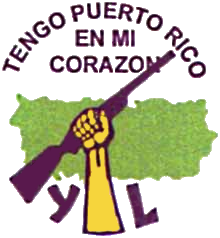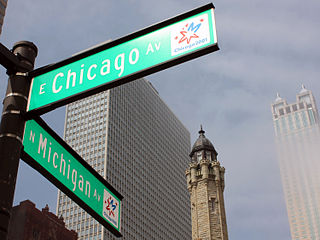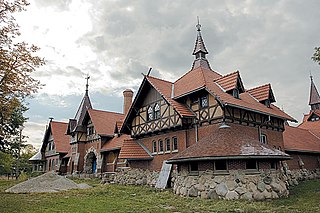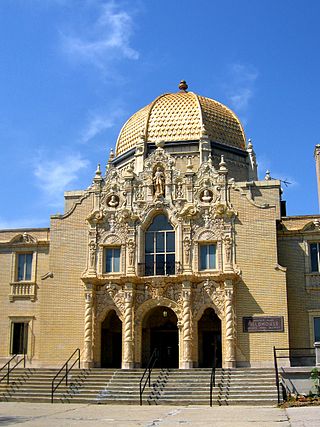
Carl August Sandburg was an American poet, biographer, journalist, and editor. He won three Pulitzer Prizes: two for his poetry and one for his biography of Abraham Lincoln. During his lifetime, Sandburg was widely regarded as "a major figure in contemporary literature", especially for volumes of his collected verse, including Chicago Poems (1916), Cornhuskers (1918), and Smoke and Steel (1920). He enjoyed "unrivaled appeal as a poet in his day, perhaps because the breadth of his experiences connected him with so many strands of American life". When he died in 1967, President Lyndon B. Johnson observed that "Carl Sandburg was more than the voice of America, more than the poet of its strength and genius. He was America."

Humboldt Park, one of 77 designated community areas, is on the West Side of Chicago, Illinois. The Humboldt Park neighborhood is known for its dynamic social and ethnic demographic change over the years. The Puerto Rican community has identified strongly with the area since the 1970s. Humboldt Park is also the alternative name of Alexander Von Park, a 207-acre (0.8 km2) park adjacent to the community area.

The Young Lords, also known as the Young Lords Organization (YLO) or Young Lords Party (YLP), was a Chicago-based street gang that became a civil and human rights organization. The group aims to fight for neighborhood empowerment and self-determination for Puerto Rico, Latinos, and colonized people. Tactics used by the Young Lords include mass education, canvassing, community programs, occupations, and direct confrontation. The Young Lords became targets of the United States FBI's COINTELPRO program.

West Town, northwest of the Loop on Chicago's West Side, is one of the city's officially designated community areas. Much of this area was historically part of Polish Downtown, along Western Avenue, which was then the city's western boundary. West Town was a collection of several distinct neighborhoods and the most populous community area until it was surpassed by Near West Side in the 1960s. The boundaries of the community area are the Chicago River to the east, the Union Pacific railroad tracks to the south, the former railroad tracks on Bloomingdale Avenue to the North, and an irregular western border to the west that includes the city park called Humboldt Park. Humboldt Park is also the name of the community area to West Town's west, Logan Square is to the north, Near North Side to the east, and Near West Side to the south. The collection of neighborhoods in West Town along with the neighborhoods of Bucktown and the eastern portion of Logan Square have been referred to by media as the Near Northwest Side.

Little Italy, sometimes combined with University Village into one neighborhood, is on the Near West Side of Chicago, Illinois. The current boundaries of Little Italy are Ashland Avenue on the west and Interstate 90/94 on the east, the Eisenhower Expressway on the north and Roosevelt to the south. It lies between the east side of the University of Illinois at Chicago campus in the Illinois Medical District and the west side of the University of Illinois at Chicago campus. The community was once predominantly Italian immigrants but now is made up of diverse ethnic and socio-economic backgrounds as a result of immigration, urban renewal, gentrification and the growth of the resident student and faculty population of the University of Illinois at Chicago (UIC). Its Italian-American heritage is primarily evident in the Italian-American restaurants that once lined Taylor Street. The neighborhood is home to the National Italian American Sports Hall of Fame as well as the historic Roman Catholic churches Our Lady of Pompeii, Notre Dame de Chicago, and Holy Family.

Division Street is a major east-west street in Chicago, Illinois, located at 1200 North. Division Street begins in the Gold Coast neighborhood near Lake Shore Drive, passes through Polonia Triangle at Milwaukee Avenue into Wicker Park and continues to Chicago's city limits and into the city's western suburbs. Once known as "Polish Broadway" during the heyday of Polish Downtown, Division Street was the favorite street of author Nelson Algren. A fountain dedicated in his name was installed in what had been the area that figured as the inspiration for much of his work.

Wicker Park is a neighborhood in the West Town community area of Chicago, Illinois, west of the Kennedy Expressway, east of Humboldt Park, and south of the Bloomingdale Trail, known for its hipster culture, art community, nightlife, and food scene.
The Division Street riots were episodes of rioting and civil unrest, which started on June 12 and continued through June 14, 1966. These riots are remembered as a turning point in Puerto Rican civic involvement in Chicago. This was the first riot in the United States attributed to Puerto Ricans.

Chicago Avenue is a major east–west street in Chicago, Illinois that runs at 800 north from 385 east to 5968 west in the Chicago street address system from which point it enters the suburbs and goes into several different suburban address systems. It originates at the shores of Lake Michigan and Lake Shore Drive in the Gold Coast neighborhood in the Near North Side community area of Chicago in Cook County, Illinois, United States, and runs west to 17th Avenue, where it terminates a few feet north of Lake Street in Melrose Park, IL. This is a distance of approximately 12.2 miles (19.6 km).

North Buffalo, is a neighborhood in the city of Buffalo, New York.

Wicker Park is a 4.03 acre public urban park in the Wicker Park neighborhood of the West Town community and West Side district, in Chicago, Illinois. It is named after Charles G. Wicker and Joel H. Wicker.

Paseo Boricua is a section of Division Street in the Humboldt Park community of the West Side of Chicago, Illinois.

Polish Downtown was Chicago's oldest and most prominent Polish settlement. Polish Downtown was the political, cultural and social capital of not only Poles in Chicago but Polish Americans throughout North America as well. Centered on Polonia Triangle at the intersection of Division, Ashland and Milwaukee Avenue, the headquarters for almost every major Polish organization in the United States was clustered within its vicinity, beginning with the Polish National Alliance to the Polish Daily News.

Puerto Ricans in Chicago are people living in Chicago who have ancestral connections to the island of Puerto Rico. They have contributed to the economic, social and cultural well-being of Chicago for more than seventy years.
José Cha Cha Jiménez is a political activist and the founder of the Young Lords Organization, a Chicago-based street gang that became a civil and human rights organization. Started in September 23, 1968, it was most active in the late 1960s and 1970s.
Dr. Pedro Albizu Campos Puerto Rican High School (PACHS) is an alternative high school located in the Humboldt Park neighborhood on the Paseo Boricua in Chicago, Illinois, United States. It is named for Puerto Rican nationalist Pedro Albizu Campos, and was founded in 1972 as La Escuelita Puertorriqueña, originally in the basement of a Chicago church. The school is NALSAS accredited, a founding member of the Alternative Schools Network, and a campus of the Youth Connection Charter School in Chicago. PACHS celebrated its 40th anniversary in January 2013.

The National Museum of Puerto Rican Arts and Culture is a museum in Chicago dedicated to interpreting the arts and culture of the Puerto Rican people and of the Puerto Ricans in Chicago. Founded in 2001, it is housed in the historic landmark Humboldt Park stables and receptory, near the Paseo Boricua.

The West Side is one of the three major sections of the city of Chicago in Cook County, Illinois, along with the North Side and the South Side. The West Side consists of communities that are of historical, cultural, and ideological importance to the history and development of Chicago. On the flag of Chicago, the West Side is represented by the central white stripe.
Gentrification, the process of altering the demographic composition of a neighborhood usually by decreasing the percentage of low-income minority residents and increasing the percentage of typically white, higher-income residents, has been an issue between the residents of minority neighborhoods in Chicago who believe the influx of new residents destabilizes their communities, and the gentrifiers who see it as a process that economically improves a neighborhood. Researchers have debated the significance of its effects on the neighborhoods and whether or not it leads to the displacement of residents. There are some researchers who claim that the loss of affordable housing mainly impacts the poorer minority residents and causes them to have to move out of their neighborhoods which destabilizes their cultural communities. However, critics say that since gentrification often excludes highly black neighborhoods, those residents are prevented from benefiting from any of the positive effects such as redevelopment and neighborhood investment. Factors associated with and used to measure gentrification in Chicago are changes in the number of residents with bachelor's degrees, median household income, racial composition, visual observations, and the presence of coffee shops. Historically, the emergence of urban black and Latino neighborhoods in Chicago during the 1950s through the 1970s were made possible because of the waves of white residents moving out into more suburban neighborhoods. There have been phases of gentrification in Chicago of various neighborhoods, some of which were in 1990s and in 2007–2009. Gentrification debates in Chicago have been mostly focused around the gentrification of Chicago's historically Latino or black neighborhoods. Generally, these neighborhoods are located near the central urban downtown areas and along the east side of the city.

San Juan Hill was a community in what is now the Lincoln Square neighborhood of the Upper West Side in Manhattan, New York City. Its residents were mostly African-American, Afro-Caribbean, and Puerto Rican, and comprised one of the largest African-American communities in New York before World War I. San Juan Hill was bound by 59th Street to the south, West End Avenue to the west, 65th Street to the north, and Amsterdam Avenue to the east. The site is now occupied by Lincoln Center, a 16.3-acre (6.6 ha) complex dedicated to the performing arts.















